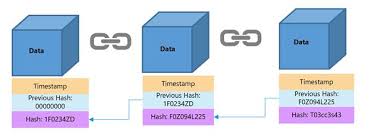PART THREE
How Blockchain Works
Imagine you have a special notebook that everyone in your neighborhood can see. This notebook is different from the ones we use every day; once something is written in it, it can't be erased or changed. This makes it a reliable place to keep important information.
The Basics: A Shared Notebook
The Digital Notebook:
Think of blockchain as this shared digital notebook. Instead of being kept in one person’s home or office, copies of this notebook are seen and stored on many computers all around the world. These computers are called nodes.
Every Transaction is Recorded:
When someone wants to do something, like send money to a friend or vote in an election, that action is written in this notebook. However, it doesn’t just get written down as a single entry; it gets grouped with other recent actions into a block — think of a block as a page in the notebook that holds several transactions.
Creating the Chain
Linking Blocks Together:
Once a block is filled with transactions, it’s locked up so that no one can change it afterward. Not only that, but each block is also connected to the block before it, forming a chain — this is why you hear the term blockchain. It’s like a series of pages where every page is linked to the one before it, ensuring that once it’s written it all stays in order.
Difficulty in Changing Information
Because every copy of the notebook is the same and is held by many different people (nodes), if someone tried to change something on their own copy, everyone else would see that it doesn’t match their copies. This makes tampering with the information very difficult because it would require changing all copies of the notebook at the same time without anyone noticing.
Key Benefits of Blockchain
Transparency and Trust:
One of the best things about blockchain is that it is very transparent. Everyone involved can see the same version of the transactions, which builds trust among users. For example, in a financial system, everyone can verify who sent money to whom, but no one can alter that record.
Applications of Blockchain:
This system of shared, immutable (unchangeable) records is valuable in many areas:
Tracking Money:
It can help people send and receive money securely, knowing that the transactions are legitimate and cannot be faked.
Voting:
Imagine being able to vote in an election where each vote is recorded on the blockchain, making it nearly impossible to alter or steal votes.
Product Verification:
Businesses can use blockchain to show the journey of a product from its origin to your home, ensuring authenticity and quality.
In Summary
Blockchain is like a digital notebook that everyone can see and that keeps a permanent record of actions, making it a reliable tool for trust in digital interactions. With its ability to provide transparency, security, and an unchangeable history, blockchain opens the door to numerous applications in finance, governance and beyond.




Courses
Learn about cryptocurrency and smart technology today.
Explore
Empower
ellie-jane@seasonedbeings.online
© 2025. All rights reserved.